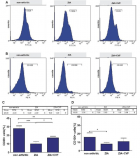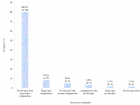Abstract
Research Article
Focused Antenatal Care in urban Ghana: A qualitative study into physical accessibility of maternal health services in Kwabre East Municipality
Akowuah Jones Asafo* and Kwarteng Bernard Owusu
Published: 02 July, 2019 | Volume 2 - Issue 2 | Pages: 054-066
Background: Accessibility to healthcare is a major component of primary health care campaign for maintaining population health. Owing to this, the government of Ghana has instituted the free maternal care and focused antenatal care policies into the maternal health care policies to woefully control maternal mortality, morbidity and to ensure improved access, quality and continuous ANC use among pregnant women. Despite these interventions, pregnant women in the Kwabre East Municipality do not fully use ANC services as recommended by the World Health Organization.
Methods: Using an in-depth interview and two focus groups conducted with women of reproductive age (15-49) in the Kwabre East Municipality. The study investigated women’s opinions, perceptions and experiences on their ANC visits.
Results: The study revealed that physical accessibility and the social context of pregnant women continue to influence their ANC use even after the introduction of the free maternal care and focused antenatal care policies.
Conclusion: The study suggests that in order to fully utilize ANC visits as recommended by the WHO in the Kwabre East Municipality, the Municipal Health Directorate should liaise with collaborating stakeholders if not eliminating to limit the influence of restrictive factors to women’s quest of using ANC. It is further recommended that management do away with hindrances that delay women who seek for ANC services in health facilities and adopt strategies and procedures that aim at increasing ANC uptake.
Read Full Article HTML DOI: 10.29328/journal.cjog.1001023 Cite this Article Read Full Article PDF
Keywords:
Physical Accessibility; Focused antenatal care; Thematic analysis; Ghana
References
- Central Bureau of Statistics. Population Census 2001, National Report. 2002, Kathmandu: Central Bureau of Statistics. 2001. Ref.: https://bit.ly/2Lu3tX2
- Sanjel S, Ghimire RH, Pun K. Antenatal care practices in Tamang community of hilly area in central Nepal. Kathmandu University Medical Journal. 2011; 9: 57-61. Ref.: https://bit.ly/2J1BZ9C
- Buor D. Determinants of utilisation of health services by women in rural and urban areas in Ghana. International Journal of Human Geography and Environmental Sciences (GeoJournal). 2004; 61: 89-102. Ref.: https://bit.ly/32163tp
- Shaikh BT, Hatcher J. Complementary and alternative medicine in Pakistan: prospects and limitations. Evid Based Complement Alternat Med. 2005; 2: 139-142. Ref.: http://bit.ly/308jtC2
- Africa Progress Panel. Maternal Health. Investing in the Lifeline of Healthy Societies and Economies. Policy brief. 2010. Ref.: https://bit.ly/2RLW7iM
- Guagliardo MF. Spatial accessibility of primary care: concepts, methods and challenges. International Journal of health geographics. 2004; 3: 3. Ref.: https://bit.ly/2RNoRHU
- Al-Taiar A, Clark A, Longenecker JC, Whitty CJ. Physical accessibility and utilization of health services in Yemen. Int J Health Geogr. 2010; 9: 38. Ref.: http://bit.ly/2JcKmPC
- Thaddeus S, Maine D. Too far to walk: maternal mortality in context. Soc Sci Med. 1994; 38: 1091-1110. Ref.: http://bit.ly/30fcqru
- World Health Organisation. Declaration of Alma-Ata: Report of the international conference on primary health care. Alma Atta, USSR. 1978.
- Andersen MR. Revisiting the Behavioral Model and Access to Medical Care: Does It Matter? University of California, Los Angeles. Journal of Health and Social Behavior. 1995; 36: 1-10. Ref.: https://bit.ly/2Nsj5wI
- Buor D. Analysing the primacy of distance in the utilisation of health services in the Ahafo-Ano south district, Ghana. Int J Health Plann Manage. 2003; 18: 293-311. Ref.: http://bit.ly/2XnAs1n
- Kwabre East Health Directorate (2015). Analyses of Maternal Health Delivery. Kwabre East District Profile, 2013. 2015. Ref.: https://bit.ly/32178Bt
- D'Ambruoso L, Abbey M, Hussein J. Please understand when I cry out in pain: women's accounts of maternity services during labour and delivery in Ghana. BMC public health. 2005; 5: 140. Ref.: https://bit.ly/2Lw9P88
- Abdulraheem BI, Olapipo AR, Amodu MO. Primary health care services in Nigeria: Critical issues and strategies for enhancing the use by the rural communities. Journal of Public Health and Epidemiology. 2012; 4: 5-13. Ref.: https://bit.ly/322Vciz
- Oyetubo AO, Afolabi OJ, Oluwaji OA. Transportation constraints to rural health accessibility in Ogun Waterside Local Government Area of Ogun State Nigeria. Journal of Research in National Development. 2017; 15. Ref.: https://bit.ly/2FLRaBF
- Jibril UN, Saleh GN, Badaki O, Anyebe EE, Umar A, et al. Health Education Intervention on Knowledge and Accessibility of Pregnant Women to Antenatal Care Services in Edu, Kwara State, Nigeria. International Journal of Womens Health and Reproduction Sciences. 2018; 6: 154-160. Ref.: https://bit.ly/2J1BaO4
- Ayinde OO, Oladeji BD, Abdulmalik J, Jordan K, Kola L, et al. Quality of perinatal depression care in primary care setting in Nigeria. BMC health services research. 2018; 18: 879. Ref.: https://bit.ly/2RIEYq0
- Gabrysch S, Campbell OM. Still too far to walk: literature review of the determinants of delivery service use. BMC pregnancy and childbirth. 2009; 9: 34. Ref.: https://bit.ly/2RK744q
- Gabrysch S, Cousens S, Cox J, Campbell OM. The influence of distance and level of care on delivery place in rural Zambia: a study of linked national data in a geographic information system. PLoS medicine. 2011; 8: e1000394. Ref.: https://bit.ly/2XAHhRy
- Ali H, Ali A, Mahmood QK, Jalal A, Ali SR. Antenatal Care: Accessibility Issue among Pakhtun Women in Malakand, Pakistan. Methodology. 2016; 10: 362-366. Ref.: https://bit.ly/2Xhhnhi
- Titaley CR, Dibley MJ, Roberts CL. Factors associated with underutilization of antenatal care services in Indonesia: results of Indonesia Demographic and Health Survey 2002/2003 and 2007. BMC public health. 2010; 10: 485. Ref.: https://bit.ly/2FHrbv1
- Curtis S, Rees Jones I. Is there a place for geography in the analysis of health inequality? Sociology of health & illness. 1998; 20: 645-672. Ref.: https://bit.ly/2J5tr1D
- De Vaus DA, de Vaus D. Research design in social research. Sage 2001. Ref.: https://bit.ly/2jIREM5
- Bowling A. Research methods in health: investigating health and health services. McGraw-hill education (UK) 2014. Ref.: https://bit.ly/2KN7ZAg
- Patton MQ. Qualitative research and evaluation methods (2nd Ed.). Newbury Park. 1990; CA: Sage.
- Braun V, Clarke V. Using thematic analysis in psychology. Qualitative Research in Psychology. 3: 77-101. Ref.: http://bit.ly/32ekdYr
- Braun V, Clarke V. What can “thematic analysis” offer health and wellbeing researchers?. Int J Qual Stud Health Well-being. 2014; 9: 26152. Ref.: http://bit.ly/2xy4IMO
- Davies MB, Hughes N. Doing a successful research project: Using qualitative or quantitative methods. Macmillan International Higher Education. 2014; 288. Ref.: http://bit.ly/2LE7Df8
- Chaibva CN. Factors influencing adolescents' utilisation of antenatal care services in Bulawayo, Zimbabwe (Doctoral dissertation) 2009. Ref.: https://bit.ly/2XcvV1X
- Arthur E. Wealth and antenatal care use: implications for maternal health care utilisation in Ghana. Health Econ Rev. 2012; 2: 1-8. Ref.: http://bit.ly/2J1psmC
- Aseweh Abor P, Abekah-Nkrumah G, Sakyi K, Adjasi CK, Abor J. The socio-economic determinants of maternal health care utilization in Ghana. International Journal of Social Economics. 2011; 38: 628-648. Ref.:https://bit.ly/2Xihlps
- Akowuah JA, Agyei-Baffour P, Asibey BO. A Qualitative Study on the Pathways to Evidence-Based Antenatal Care in Periurban Ghana. Obstetrics and gynecology international. 2018. Ref.: https://bit.ly/2J2HF36
- Guagliardo MF. Spatial accessibility of primary care: concepts, methods and challenges. Int J Health Geogr. 2004; 3: 3. Ref.: http://bit.ly/2xxEeuE
- Choudhury N, Ahmed SM. Maternal care practices among the ultra-poor households in rural Bangladesh: a qualitative exploratory study. BMC Pregnancy and Childbirth. 2011; 11: 15. Ref.: https://bit.ly/2XimX3j
- Overbosch GB, Nsowah-Nuamah NN, van den Boom GJ, Damnyag L. Determinants of antenatal care use in Ghana. Journal of African Economies. 2004; 13: 277-301. Ref.: https://bit.ly/3270f1J
- Agboolah AR. Utilisation of antenatal care services in Atwima Nwabiagya District. Doctoral dissertatioz. 2009. Ref.:https://bit.ly/2J27kZJ
- Addai I. Determinants of use of maternal–child health services in rural Ghana. J Biosoc Sci. 2000; 32: 1-5. Ref.: http://bit.ly/2YyJN8f
- Mekonnen Y, Mekonnen A. Utilization of maternal health care services in Ethiopia, 2002; Ref.: http://bit.ly/2JrHGfM
- Hounton S, Chapman G, Menten J, De Brouwere V, Ensor T, et al. Accessibility and utilisation of delivery care within a Skilled Care Initiative in rural Burkina Faso. Tropical medicine & international health. 2008; 13: 44-52. Ref.: https://bit.ly/2Yt1zcQ
- Duong DV, Binns CW, Lee AH. Utilization of delivery services at the primary health care level in rural Vietnam. Social science & medicine. 2004; 59: 2585-2595. Ref.: https://bit.ly/2Xki2Uc
- Mesko N, Osrin D, Tamang S, Shrestha BP, Manandhar DS, et al. Care for perinatal illness in rural Nepal: a descriptive study with cross-sectional and qualitative components. BMC International health and human rights. 2003; 3: 3. Ref.: https://bit.ly/2XDe0FP
- Amooti-Kaguna B, Nuwaha F. Factors influencing choice of delivery sites in Rakai district of Uganda. Social science & medicine 2000; 50: 203-213. Ref.:https://bit.ly/2FKo8Tb
- Griffiths P, Stephenson R. Understanding users ‘perspectives of barriers to maternal health care use in Maharashtra, India. Journal of biosocial science. 2001; 33: 339-359. Ref.: https://bit.ly/2Xc7cLa
Similar Articles
-
Focused Antenatal Care in urban Ghana: A qualitative study into physical accessibility of maternal health services in Kwabre East MunicipalityAkowuah Jones Asafo*,Kwarteng Bernard Owusu. Focused Antenatal Care in urban Ghana: A qualitative study into physical accessibility of maternal health services in Kwabre East Municipality. . 2019 doi: 10.29328/journal.cjog.1001023; 2: 054-066
-
Determinants of women’s perceived satisfaction on Antenatal care in urban Ghana: A cross-sectional studyAkowuah Jones Asafo*,Danquah Benedicta Adoma. Determinants of women’s perceived satisfaction on Antenatal care in urban Ghana: A cross-sectional study. . 2019 doi: 10.29328/journal.cjog.1001022; 2: 038-053
-
Determinants of health seeking behaviour of women with obstetric fistula in south- south and south east, Nigeria: A review of the impact of availability and quality of health care services through a cross-sectional studyPeters Grace E*,Ononokpono Dorathy N,Willson Nsikanabasi U,Oko Nnabuike I,Peters EJ. Determinants of health seeking behaviour of women with obstetric fistula in south- south and south east, Nigeria: A review of the impact of availability and quality of health care services through a cross-sectional study. . 2021 doi: 10.29328/journal.cjog.1001088; 4: 060-065
Recently Viewed
-
Fiesta vs. Stress Condition the Incidence and the Age at Menarche. Forty Years of ResearchCarlos Y Valenzuela*. Fiesta vs. Stress Condition the Incidence and the Age at Menarche. Forty Years of Research. Clin J Obstet Gynecol. 2025: doi: 10.29328/journal.cjog.1001190; 8: 069-073
-
The Bacteriological Profile of Nosocomial Infections at the Army Central Hospital of BrazzavilleMedard Amona*,Yolande Voumbo Matoumona Mavoungou,Hama Nemet Ondzotto,Benjamin Kokolo,Armel Itoua,Gilius Axel Aloumba,Pascal Ibata. The Bacteriological Profile of Nosocomial Infections at the Army Central Hospital of Brazzaville. Int J Clin Microbiol Biochem Technol. 2025: doi: 10.29328/journal.ijcmbt.1001032; 8: 009-022
-
Parents’ perception of the school nurse’s roleDiane Gillooly*,Ganga Mahat,Patricia Paradiso. Parents’ perception of the school nurse’s role. J Adv Pediatr Child Health. 2020: doi: 10.29328/journal.japch.1001021; 3: 064-067
-
A girl with a stiff neckG Carlone*,A Prisco,F Vittoria,E Barbi,M Carbone. A girl with a stiff neck. J Adv Pediatr Child Health. 2020: doi: 10.29328/journal.japch.1001019; 3: 058-060
-
A rare case of acute necrotising pancreatitis in a paediatric patientLizeri Jansen*,Gabrielle Colleran,Ikechukwu Okafor,Nuala Quinn. A rare case of acute necrotising pancreatitis in a paediatric patient. J Adv Pediatr Child Health. 2020: doi: 10.29328/journal.japch.1001020; 3: 061-063
Most Viewed
-
Feasibility study of magnetic sensing for detecting single-neuron action potentialsDenis Tonini,Kai Wu,Renata Saha,Jian-Ping Wang*. Feasibility study of magnetic sensing for detecting single-neuron action potentials. Ann Biomed Sci Eng. 2022 doi: 10.29328/journal.abse.1001018; 6: 019-029
-
Evaluation of In vitro and Ex vivo Models for Studying the Effectiveness of Vaginal Drug Systems in Controlling Microbe Infections: A Systematic ReviewMohammad Hossein Karami*, Majid Abdouss*, Mandana Karami. Evaluation of In vitro and Ex vivo Models for Studying the Effectiveness of Vaginal Drug Systems in Controlling Microbe Infections: A Systematic Review. Clin J Obstet Gynecol. 2023 doi: 10.29328/journal.cjog.1001151; 6: 201-215
-
Causal Link between Human Blood Metabolites and Asthma: An Investigation Using Mendelian RandomizationYong-Qing Zhu, Xiao-Yan Meng, Jing-Hua Yang*. Causal Link between Human Blood Metabolites and Asthma: An Investigation Using Mendelian Randomization. Arch Asthma Allergy Immunol. 2023 doi: 10.29328/journal.aaai.1001032; 7: 012-022
-
Impact of Latex Sensitization on Asthma and Rhinitis Progression: A Study at Abidjan-Cocody University Hospital - Côte d’Ivoire (Progression of Asthma and Rhinitis related to Latex Sensitization)Dasse Sery Romuald*, KL Siransy, N Koffi, RO Yeboah, EK Nguessan, HA Adou, VP Goran-Kouacou, AU Assi, JY Seri, S Moussa, D Oura, CL Memel, H Koya, E Atoukoula. Impact of Latex Sensitization on Asthma and Rhinitis Progression: A Study at Abidjan-Cocody University Hospital - Côte d’Ivoire (Progression of Asthma and Rhinitis related to Latex Sensitization). Arch Asthma Allergy Immunol. 2024 doi: 10.29328/journal.aaai.1001035; 8: 007-012
-
An algorithm to safely manage oral food challenge in an office-based setting for children with multiple food allergiesNathalie Cottel,Aïcha Dieme,Véronique Orcel,Yannick Chantran,Mélisande Bourgoin-Heck,Jocelyne Just. An algorithm to safely manage oral food challenge in an office-based setting for children with multiple food allergies. Arch Asthma Allergy Immunol. 2021 doi: 10.29328/journal.aaai.1001027; 5: 030-037

If you are already a member of our network and need to keep track of any developments regarding a question you have already submitted, click "take me to my Query."
















































































































































